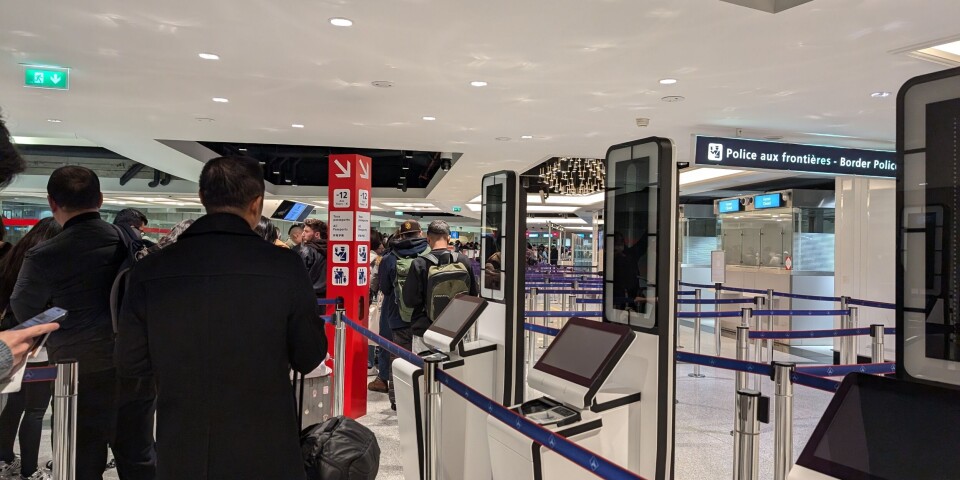Non-EU foreign families living in France should prioritise applications for ‘DCEM’ travel documents for their children to avoid the risk of border complications later this year.
This will apply from birth and usually up to age 18 and one is needed for each child.
The process of applying for a document de circulation pour étranger mineur (DCEM) – a young foreign person’s travel document – is not simple and, one support group reports, can take several months to process at some prefectures.
Depending on your exact family circumstances, nationality and what supporting documents you already have to hand, it could cost from tens to several hundred of euros for a couple with two children. Birth or marriage certificates, if required, need to be translated into French by a sworn translator, whose fees vary but are about €70 per document.
DCEMs: the basics
- Non-EU foreign families residing in France are advised to secure a Document de Circulation pour Etranger Mineur (DCEM) for each child to simplify travel and prove residency status.
- The application process for a DCEM can be long and complex, potentially taking several months at some prefectures, and may cost from tens to several hundred euros for a family with two children.
- The British Ambassador to France highlighted the need for DCEMs for children to exempt them from the upcoming European Entry/Exit System (EES), which will log visitors' personal information and biometrics upon entry and exit from the Schengen Area.
The British Ambassador to France, Dame Menna Rawlings, recently told The Connexion that it is going to be important for children to have a DCEM so their families can prove they do not need to be registered in the European Entry/Exit System (EES) when it starts around November 10 this year. The date is a working estimate in the travel industry (‘autumn’ is what is still cited officially).
The EES will affect non-EU/EEA/Swiss people who are visiting (not living in) the EU’s Schengen area and it will log personal information and details of their trip, as well as, on the first entry or exit to the area after it starts, a facial image and a scan of their fingerprints.
It is intended to remove the need for passport stamps as it will automatically log entry and exit from the area and monitor respect of the 90/180 days rule.
Read more: UK ambassador to France – what travellers should know about border change
Those with long-stay visas and/or residency cards will not be affected. However under-18s in such families do not usually have their own residency documents and instead their rights are linked to their family’s rights. For this reason when they travel - and especially if unaccompanied by parents/guardians - it is advised that they have a DCEM with them to prove they are residents.
Formerly this was considered optional for nationalities with a short-stay visa waiver for France, such as Americans, British, Canadians etc, though advisable to avoid unnecessary passport stamping, but it is now going to be essential, Dame Menna said.
Currently DCEMs are issued not as a card, but as an A4 print-out with a QR code on it.
Note that if your children do not have a DCEM this does not necessarily mean you will not be able to travel, but your children may have to be registered into the EES system, which could cause confusion at the border on future trips.
If you need to travel urgently and cannot obtain the documents, you may wish to take relevant supporting documents you have available to prove your children's relationship to yourself and that you live in France together, and explain the situation to the border police at a manned passport booth.
How to apply for a DCEM
You can find the steps to apply at this link on the website service-public.fr. We note that there is an option to see this information in English, however this is an automatic translation (ie. done by AI).
The application has to be made by a child’s parent or guardian at the same website as many residency card formalities, known as Anef: the exact page is here.
For young children the DCEM lasts five years. For older children it lasts until they have their own residency card. This is usually after they turn 18, or from 16 if they need their own card for work or study applications.
While the application is online, it is still necessary to wait for a text from the prefecture to be called in to collect it. The adult who made the application should collect the DCEM and be accompanied by their child.
At this stage there is a €50 fee payable by timbre fiscal, which you should take with you - however the fee does not apply to British ‘Withdrawal Agreement’ families (the adult should bring their card as proof) or children with an EU/EEA/Swiss parent.
Timbres fiscaux can be purchased at tabac shops or online.
Supporting documents
Supporting documents must be attached in digital format.
You should use an official booth to take a digital photo of your child (this can also be done by professional photographers). You can find these booths, which have the Marianne logo of the French Republic on them, in large train stations, in some shopping centres etc. Pick the option for a digitised photograph, which will include a numeric code on it (numéro EPhoto) that you can use to submit the photo online.
Information about the adult
A copy of your full birth certificate, translated into French by a sworn translator. UK nationals can obtain copies of birth/marriage etc certificates from the GRO (a birth certificate sent overseas with DHL costs about €50)
Read more: Traducteur agrée – how do I find one and what are the fees
Your passport or national identity card
Your carte de séjour
Proof of your address if you live with the child (the most commonly used document is a utility bill, such as gas, electricity or landline internet, dated within the last three months)
Information about the child
The child’s passport
A certificat de scolarité from the school, or a crèche certificate or other similar document as evidence that the child lives in France
Proof of the child’s address (if not the same as the parent)
Proof of family relationship
Livret de famille, if you have this (eg. if the child was born in France or you are a couple who were married in France); if not then the child’s full birth certificate translated by a sworn translator
For married parents: the marriage certificate, translated by a sworn translator; for unmarried parents the child’s full birth certificate (translated) can be used as proof; for divorced parents, the divorce judgement (translated)
Other documents may be required depending on the exact circumstances (see link above for service-public.fr).
Once you have applied via Anef, you should regularly check your account for messages, in case, for example, additional documents are indeed required.
When the application has been processed, you will be called into the prefecture, usually via a text message.
The co-chair of the Rift group for Britons in France, Justine Wallington, said Rift had originally called for children to have their own WA residency cards, to avoid any such border issues, however that had not been taken up.
She said in her experience, and based on feedback from their members, “you do need to include all the evidence listed – most prefectures are insisting on this”.
“I have raised the fact that this is an admin-heavy process with the European Commission.
“The only plus for WA beneficiaries is that the DCEMs are free – however translations are not.
“They will be needed for all children otherwise they will have to go through EES biometrics process.”




























